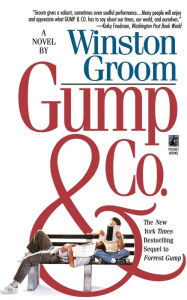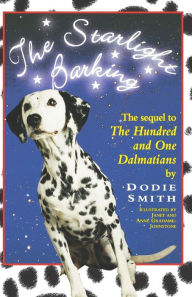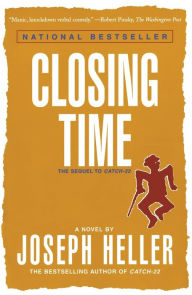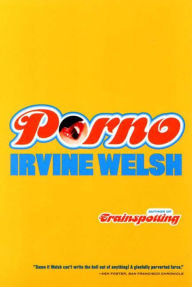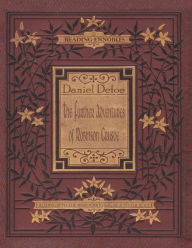6 Literary Sequels You Never Knew Existed
Sure, there’s Louisa May Alcott’s Little Women sequel called Little Men, and last year we finally got Harper Lee’s To Kill a Mockingbird follow-up Go Set a Watchman. But sequels in literature are relatively rare—at least compared to movies. Here are some sequels you probably haven’t read to books you probably have.
Gump & Co.
Gump & Co.
Paperback $16.99
Gump and Co., by Winston Groom
Winston Groom’s Forrest Gump was only a minor success when it was released in 1986—not the cultural phenomenon that the movie adaptation starring Tom Hanks was in 1994. The movie was a very loose adaptation—among the parts excised or changed were Forrest’s time held captive by cannibals, his math genius abilities, and his many sexual escapades. In 1995, Groom jumped on Gumpmania and wrote a sequel, which chronicles Forrest’s life through the 20th century where the first one left off, about 1980. Bizarrely, it runs with the conceit that Forrest Gump is a real person, and that the Forrest Gump movie was based on his life—and Forrest didn’t care for it. The first line of the book is, “Don’t never let nobody make a movie of your life’s story.”
Gump and Co., by Winston Groom
Winston Groom’s Forrest Gump was only a minor success when it was released in 1986—not the cultural phenomenon that the movie adaptation starring Tom Hanks was in 1994. The movie was a very loose adaptation—among the parts excised or changed were Forrest’s time held captive by cannibals, his math genius abilities, and his many sexual escapades. In 1995, Groom jumped on Gumpmania and wrote a sequel, which chronicles Forrest’s life through the 20th century where the first one left off, about 1980. Bizarrely, it runs with the conceit that Forrest Gump is a real person, and that the Forrest Gump movie was based on his life—and Forrest didn’t care for it. The first line of the book is, “Don’t never let nobody make a movie of your life’s story.”
Starlight Barking
Starlight Barking
By
Dodie Smith
Illustrator
Janet Grahame Johnstone
,
Anne Grahame-Johnstone
,
Janet Grahame-Johnstone
Paperback $16.99
The Starlight Barking, by Dodie Smith
In 1967, more than a decade after her children’s classic The Hundred and One Dalmatians was published, Dodie Smith came out with a sequel. And while some may complain that sequels are often rehashes or retreads of the events and tropes of the first novel, you can’t say that for The Starlight Barking. The plot: All of Dalmatians from the first book wake up on their dog plantation one morning to find that every non-dog on Earth has fallen into some kind of collective coma (including Cruella de Vil, in a cameo appearance). It turns out it’s a plot by a dog alien named Sirius who wants all the dogs on Earth to join him on Sirius (the, uh, “Dog Star”). Also, all the dogs on Earth can also fly and communicate telepathically.
The Starlight Barking, by Dodie Smith
In 1967, more than a decade after her children’s classic The Hundred and One Dalmatians was published, Dodie Smith came out with a sequel. And while some may complain that sequels are often rehashes or retreads of the events and tropes of the first novel, you can’t say that for The Starlight Barking. The plot: All of Dalmatians from the first book wake up on their dog plantation one morning to find that every non-dog on Earth has fallen into some kind of collective coma (including Cruella de Vil, in a cameo appearance). It turns out it’s a plot by a dog alien named Sirius who wants all the dogs on Earth to join him on Sirius (the, uh, “Dog Star”). Also, all the dogs on Earth can also fly and communicate telepathically.
Rhett Butler's People
Rhett Butler's People
In Stock Online
Paperback
$12.73
$15.99
Rhett Butler’s People, by Daniel McCaig
Published in 1936, Gone With the Wind sold 30 million copies, won a Pulitzer Prize, and was 1,037 pages long. Margaret Mitchell had no need to revisit Tara (nor anything else—GWTW was the only book she ever wrote). In 1991, her estate negotiated a deal with author Alexandra Ripley for a sequel called Scarlett. It was a huge bestseller, and Mitchell’s estate wanted more. After two deals with two other authors fell through, St. Martin’s Press (who had paid $4.5 million to the Mitchell estate for the sequel rights) recruited historical novelist Donald McCaig. Rather than write a direct sequel, he told the events of GWTW from the point of view of Rhett Butler, arguing that the Civil War provided the necessary emotional backdrop to make Mitchell’s characters compelling. Published in 2007, Rhett Butler’s People sold a million copies, and St. Martin’s commissioned another from McCaig. In 2014, it published Ruth’s Journey, a Gone With the Wind prequel focusing on the life of Mammy, who here gets a real first name.
Rhett Butler’s People, by Daniel McCaig
Published in 1936, Gone With the Wind sold 30 million copies, won a Pulitzer Prize, and was 1,037 pages long. Margaret Mitchell had no need to revisit Tara (nor anything else—GWTW was the only book she ever wrote). In 1991, her estate negotiated a deal with author Alexandra Ripley for a sequel called Scarlett. It was a huge bestseller, and Mitchell’s estate wanted more. After two deals with two other authors fell through, St. Martin’s Press (who had paid $4.5 million to the Mitchell estate for the sequel rights) recruited historical novelist Donald McCaig. Rather than write a direct sequel, he told the events of GWTW from the point of view of Rhett Butler, arguing that the Civil War provided the necessary emotional backdrop to make Mitchell’s characters compelling. Published in 2007, Rhett Butler’s People sold a million copies, and St. Martin’s commissioned another from McCaig. In 2014, it published Ruth’s Journey, a Gone With the Wind prequel focusing on the life of Mammy, who here gets a real first name.
Closing Time
Closing Time
Paperback
$10.70
$16.99
Closing Time, by Joseph Heller
Joseph Heller’s 1961 novel Catch-22 is a towering achievement of satire, skewering bureaucracy, the military, and modern life in equal measure. In 1994, more than 30 years later, Heller followed it up with Closing Time. Set in New York City, it depicts how Milo Minderbinder, Yossarian, and the others are dealing with getting old and facing death.
Closing Time, by Joseph Heller
Joseph Heller’s 1961 novel Catch-22 is a towering achievement of satire, skewering bureaucracy, the military, and modern life in equal measure. In 1994, more than 30 years later, Heller followed it up with Closing Time. Set in New York City, it depicts how Milo Minderbinder, Yossarian, and the others are dealing with getting old and facing death.
Porno
Porno
By Irvine Welsh
Paperback
$16.10
$16.95
Porno, by Irvine Welsh
A reader of Irvine Welsh’s Trainspotting (or a viewer of the film) might be led to believe that none of the characters would’ve lived long enough for further adventures, what with all of the heroin and swimming around in disgusting toilets. But in 2002, Welsh gets most of the old gang back together—Renton, Spud Begbie, Nikki, and Sick Boy—to tell a tale of a world possibly seedier than that of Scottish drug dens: the pornography industry.
Porno, by Irvine Welsh
A reader of Irvine Welsh’s Trainspotting (or a viewer of the film) might be led to believe that none of the characters would’ve lived long enough for further adventures, what with all of the heroin and swimming around in disgusting toilets. But in 2002, Welsh gets most of the old gang back together—Renton, Spud Begbie, Nikki, and Sick Boy—to tell a tale of a world possibly seedier than that of Scottish drug dens: the pornography industry.
The Further Adventures of Robinson Crusoe
The Further Adventures of Robinson Crusoe
By Daniel Defoe
Paperback $5.99
The Further Adventures of Robinson Crusoe
Daniel Defoe is credited with inventing, or at least popularizing and solidifying, the English-language novel with Robinson Crusoe, the story of a man deserted on a tropical island. It would seem that Defoe also invented another hallmark of culture: the sequel. In it, Crusoe gets off the island, returns to the island, and then keeps traveling; to Madagascar, China, and Siberia. Defoe worked fast—both Robinson Crusoe and the sequel were published in 1719.
Have you read many of these little-known sequels?
The Further Adventures of Robinson Crusoe
Daniel Defoe is credited with inventing, or at least popularizing and solidifying, the English-language novel with Robinson Crusoe, the story of a man deserted on a tropical island. It would seem that Defoe also invented another hallmark of culture: the sequel. In it, Crusoe gets off the island, returns to the island, and then keeps traveling; to Madagascar, China, and Siberia. Defoe worked fast—both Robinson Crusoe and the sequel were published in 1719.
Have you read many of these little-known sequels?
